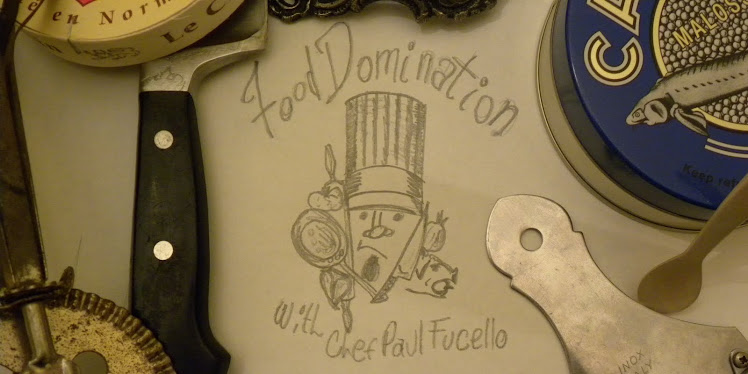
Well, I have been wanting to post this for some time now and I suppose with my daughter in bed, and my wife in our bedroom reading in air conditioned bliss, I have the time. Many people asked me about my old profile picture here through private e-mails (apparently more people read this than I had expected). It is a small dessert canape of my own creation I call the Blinacinno, like blini and cappuccino smashed together into one fantastic word.
It is an idea that came about after I had completed my research in molecular gastronomy's "spherification" process. I will delve deeper into this process momentarily. The end result are tiny spheres that resemble caviar. A classic preparation for caviar canapes are on blinis, a small pancake of sorts, with sour cream or creme fraiche and a sprig of dill. I wanted to make this dessert. With the help of two chemicals i was able to do so.
THE PLAYERS
Sodium Alginate: The residual sodium salt of Alginic Acid, which is extracted from brown algae or a form of seaweed if you will. It is used as a thickener and stabilizer in not just food...many screen printers use it as a thickener for their inks. It is considered to be a hydrocolloid. When introduced to calcium salts the gelling properties take place.
Calcium Chloride: The calcium salt I used to achieve this. It is the food grade calcium chloride, not the ice melter grade. Food grade calcium chloride is used to give pickles their snap.
So what is the process???
Basically you take a liquid, low or rid of calcium and add your measured sodium alginate (I measure in grams as most molecular gastro. recipes are). You blend a small portion of the liquid really well with the alginate and then add the rest and blend even more. You let it sit for an hour to release any air bubbles. In a separate container you dissolve some calcium chloride in plain old water. Draw the alginate mixture out with a syringe, I used a 30ml large syringe. Slowly, drop by drop, add the alginate mixture into the calcium mixture. Spherification has occurred! The droplets instantaniously form into little shperes. The longer you leave them in the calcium mixture, the longer they will solidify. The trick is to pull them out before they solidify completely so there is a liquid center. The great thing about this process is that it is thermoirreversible, so hot or cold storage or applications will not affect the end result.
Well my liquid was espresso, lightly sweetened. I used the process and formed coffee caviar. I made a sweet pancake, smaller than a half dollar and topped it with whipped cream, coffee caviar, a dusting of cinnamon and a chocolate cigarette, voila...the blinacinno. The process is very in-depth for such a simple assembly. So there you have it.

No comments:
Post a Comment